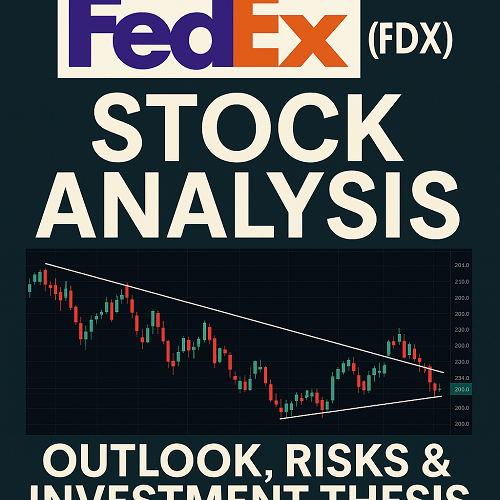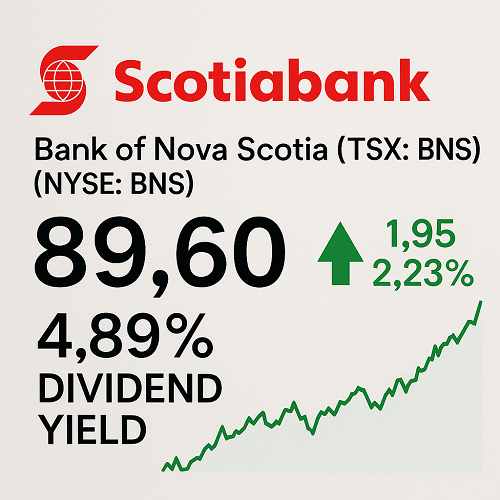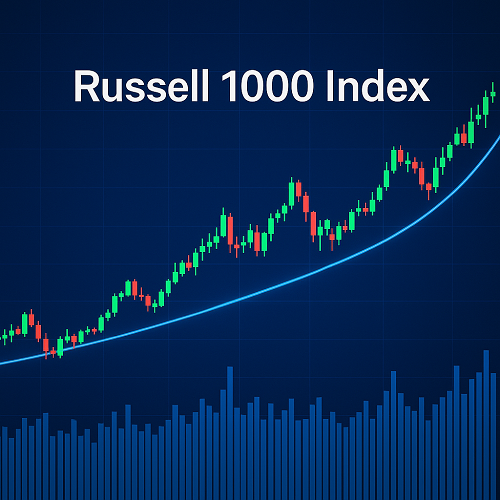FedEx stock price is influenced by various global factors. FedEx Corporation (Ticker: FDX) is a globally recognized logistics and parcel delivery giant, and its stock is often viewed as a bellwether for global trade, supply chain health, and e-commerce trends. For active traders, long-term investors, and sector analysts, FDX offers a complex mix of opportunity and risk.
In this article, we deliver a comprehensive, up-to-date analysis of FDX — covering business fundamentals, valuation, risks, technical setup, and strategic outlook for 2025. If you’re evaluating logistics or transport stocks, or seeking mid- to long-term exposure to freight and delivery tailwinds, this is your in-depth playbook.
FedEx at a Glance
Company Overview & Business Segments
FedEx operates across multiple segments:
- FedEx Express & FedEx Ground / Parcel: Core parcel delivery business handling time-sensitive and standard shipments.
- FedEx Freight: Less-Than-Truckload (LTL) freight business for regional / intercity shipments.
- Other Services: Supply chain services, logistics, cross-border, e-commerce solutions.
The company aims to leverage synergies across network density, global logistics, and technology to stay competitive.
In late 2024, FedEx announced a spinoff of its Freight (LTL) business, expected in mid-2026.The rationale: allow clearer focus on parcel/express while unlocking hidden value in the trucking/freight side.
Strategic Transition: Freight Spinoff
The impending separation means:
- Freight as a standalone will have its own capital structure, management incentives, and valuation.
- Investors can separately value parcel/express vs freight.
- Execution risk is material — leadership roles are being finalized (e.g. new CFO for Freight).
- The spinoff could catalyze value unlocking if the freight business trades at higher multiples relative to being embedded in FedEx’s consolidated valuation.
Thus, when analyzing FDX, you must mentally “unbundle” the parts to assess upside / hidden value.
FDX Stock Snapshot & Market Data
Current Price & Performance
As of the latest trading:
- Price: ~$242.xx (recent drop ~1.9%)
- 52-week range: ~$194.29 – $308.53
- YTD performance: Down ~14.4%, while the S&P 500 is up ~14.6%
Key Metrics & Ratios
From various sources:
- P/E (trailing): ~14.3×
- PEG: Mixed (some negative or elevated)
- Dividend yield: ~2.3–2.4%
- Price-to-book: ~1.9×
- Debt: ~ $37.9 B total debt with ~$6.2 B cash
These ratios suggest FDX trades at moderate valuation relative to its asset base and earnings, but with significant leverage on its balance sheet.
Analyst Consensus & Forecasts
- Average price target: ~$268.7 (implying ~10–12% upside)
- Ratings: “Moderate Buy” consensus from many analysts
- Forecasts: Revenue and EPS growth projections vary — some expect ~9–10% EPS growth over coming years.
- Range: Some target as high as ~$314, while more cautious analysts go into the $230–$250 band.
Thus, analysts broadly see upside, though sensitivity to execution and macro trends is high.
Recent News & Catalysts (2024–2025)
Earnings Guidance & Revisions
FedEx has recently reinstated full-year guidance for fiscal 2026 after earlier uncertainty, but concerns linger whether underlying fundamentals will support it. Analysts caution that the guidance already embeds an optimistic rebound in freight demand.
In prior quarters, FedEx slashed outlooks, triggering stock volatility.
Analyst Downgrades & Sentiment Shifts
- J.P. Morgan downgraded FDX from “Overweight” to “Neutral,” citing risk in the freight business and doubts about the rebound.
- Some analysts highlight that customers are resisting rate hikes and competition is intensifying.
- Concerns exist over tariff / trade policy risk, especially post–“de minimis” import rule changes.
Structural Moves: Freight Spin & Leadership
Final leadership appointments for the upcoming freight division were made in October 2025. This signals the move from planning to execution phase.
Locking in capable executives will be vital for the success of the spinoff, affecting investor confidence.
Business Segment Deep Dive & Prospects
Express & Ground / Parcel Division
Strengths & tailwinds:
- Growth in e-commerce, next-day and two-day delivery demand
- Economies of scale in dense routes
- Premium pricing power for time-sensitive delivery
Challenges:
- Fuel, labor, and maintenance cost pressures
- Slower volume growth in mature markets
- Competitive landscape (UPS, DHL, Amazon logistics)
Express margins tend to be tighter, and dense route optimization is essential to maintain profitability.
Freight (LTL) Division
As FedEx spins it off, Freight merits its own deep valuation:
Opportunities:
- Regional LTL demand may recover
- Cost rationalization, network improvements
- Eliminating cross-subsidization and inefficiencies
Risks:
- Highly cyclical, sensitive to economic downturns
- Capital intensive, with heavy equipment, infrastructure costs
- Rate pressure and competition from pure-play freight operators
Thus, the freight business may offer higher upside if managed well — but also adds volatility.
Synergies & Interdependencies
Parcel and freight share overhead, logistics expertise, routing intelligence, and infrastructure (hubs, trucks, IT). Post-spinoff, FedEx will aim to retain synergies via contracts or joint services, but some friction is inevitable.
Those synergies will be a source of value, but also a potential weakness if misallocated.
Financial Analysis & Forecasting
Recent Financials
- FedEx’s latest earnings beat consensus in some segments, though pressure persists in freight.
- The company’s income statement shows shrinking margin in some quarters, due to cost headwinds.
- Its balance sheet is leveraged: debt levels are nontrivial vs cash reserves.
- Free cash flow is critical — future performance will depend on maintaining positive cash flows especially amid capex and spin costs.
Forecast Model (2025–2028)
A rough projection framework (based on forecasts from StockAnalysis and others):
| Year | Revenue Growth | EPS Forecast | Comments |
|---|---|---|---|
| 2025 | ~2–5% | ~$18–19 | Based on conservative assumptions |
| 2026 | ~5–8% | ~$20–21 | Recovery, spin effects begin |
| 2027 | ~7–10% | ~$22–24 | Improved margins, scale |
| 2028 | ~6–9% | ~$24–26 | Stable growth, better efficiency |
You can build a DCF model using these assumptions, discounting with a suitable WACC (8–10%). The freight spin may justify a lower discount rate for that standalone business.
Valuation & Price Target Framework
Comparable Analysis
Peers include UPS, XPO Logistics, Old Dominion (ODFL), etc. Compare EV/EBITDA, P/E, P/FCF, and growth outlooks. The market often values pure-play parcel operators at higher multiples than multi-segment logistics firms.
DCF & Intrinsic Value
- Model free cash flows for FedEx ex-freight, then separately value freight business.
- Allocate corporate overhead, cost of capital, leverage effects.
- Sensitivity analysis: vary growth, margin, discount rate.
A baseline intrinsic valuation may land in a $260–$290 range assuming full execution and synergy capture; downside case might compress to $230–$240.
Consensus & Price Target Range
Analyst consensus currently hovers around $268–$270 (implying 10–15% upside)
Some bullish estimates stretch toward $300+, though those assume optimistic freight recovery and synergies.
Thus, a realistic target band for 12–24 months could be $250–$300, depending on execution and macro conditions.
Risks & Red Flags
- Economic downturn / recession: demand for LTL and parcel services is cyclical.
- Fuel, labor, inflation: rising input cost pressure.
- Capex burden & maintenance: trucks, aircraft, hubs require heavy ongoing investment.
- Spinoff execution risk: separation complexity, transitional service agreements, corporate governance decisions.
- Rate pushback & competition: customers resisting rate hikes; rivals adding capacity.
- Regulatory / trade policy: tariff changes, de minimis import rules, cross-border logistics.
- Debt & interest rate exposure: leverage magnifies risk in rising rates environment.
Any one of these could derail upside potential or push downside risk.
Technical & Sentiment Overview
Chart Analysis
- The stock has pulled back sharply from highs near ~$308 to ~$242 area, forming a possible support zone near $230–$240.
- Key resistance zones lie between $260–$280, and $300+ would be major breakout territory.
- Watch moving averages (50-day, 200-day) as trend indicators.
Sentiment & Flows
- Institutional holdings are high — indicating confidence (or at least, long-term positioning).
- Insider selling has been modest but should be monitored for red flags.
- Options market (volatility skew, open interest) can reveal near-term sentiment extremes.
- News flow (downgrades, freight guidance, macro data) causes short-term volatility.
Investment Thesis: Buy / Hold / Sell?
Bull Case
- Freight spinoff unlocks hidden value
- Express/Parcel growth with e-commerce tailwinds
- Margins expand via optimization and cost discipline
- Valuation gap arbitrage (market re-rates multiple)
Bear Case
- Sluggish freight demand persists
- Rate resistance from customers
- Execution risk in spin separation
- Macroeconomic recession drags volumes
Recommendation
- Base case: Hold / Selective Buy — for orientation toward core parcel growth
- Aggressive tilt: Small exposure if conviction is high and you are comfortable with volatility
- Use scaled entries or options hedges to mitigate risk
- Time horizon: 12–24 months minimum to let spinoff and execution play out
Position size should reflect your risk appetite — avoid overexposure given cyclical and structural uncertainties.
Conclusion & Key Takeaways
FedEx (FDX) is not a simple “logistics stock” — it’s a complex hybrid of parcel delivery and freight operations, now entering a major structural transition via its freight spinoff. The path to value creation depends heavily on execution, cost control, and macro stability.
While valuation multiples and analyst consensus suggest upside in the $260–$300 range, downside risks remain real, especially if freight demand falters or execution misfires. For diligent investors, FDX offers a potentially rewarding, though nuanced, long-term play — provided one remains vigilant to signals, earnings revisions, and macro swings.





 XAUT-USD
XAUT-USD  AMD
AMD  MARA
MARA  SHOP
SHOP  BULL
BULL  CL=F
CL=F